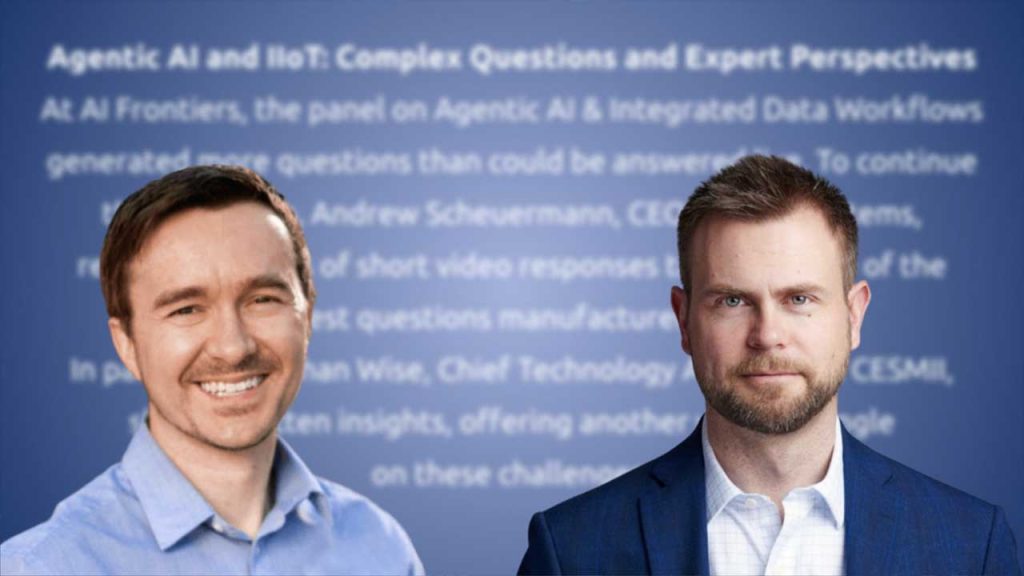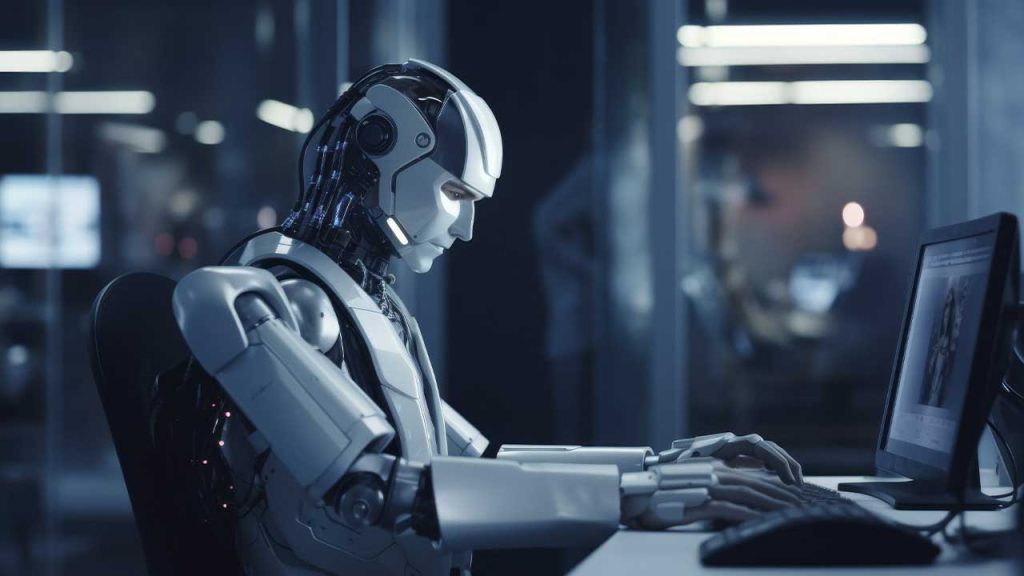Agentic AI and IIoT: Complex Questions and Expert Perspectives
At AI Frontiers, the panel on Agentic AI & Integrated Data Workflows generated more questions than could be answered live. To continue the discussion, Andrew Scheuermann, CEO of Arch Systems, recorded a series of short video responses tackling some of the toughest questions manufacturers raised. In parallel, Jonathan Wise, Chief Technology Architect at CESMII, shared written insights, offering another valuable angle on these challenges.
Below you’ll find each question, expert perspectives from both leaders, and links for further exploration.
Who should data be made understandable to — generative AI or humans?
Andrew Scheuermann’s Answer:
The answer is both. Traditional ML systems require structured, standardized data, but generative AI can also use the same formats designed for humans — dashboards, reports, and analyses.
The difference is scale. Humans need aggregation into KPIs and summaries because their attention is limited. Generative AI, by contrast, can process every dashboard and report across an enterprise and re-summarize them instantly.
This dual capability changes how systems should be designed. Data needs to serve both people, who require clarity, and AI copilots, which can analyze at scale. That way, AI takes on repetitive analyst work while humans focus on compliance, security, and judgment calls.
How can we prevent misalignment in agentic AI systems, given risks like financial loss or misinformation?
Andrew Scheuermann’s Answer:
Misalignment is a real risk, which makes principles and governance essential. AI systems must be transparent, auditable, and traceable — similar to SOC 2 standards in software.
Manufacturers should start with low-risk, high-value use cases such as labeling downtime reasons or drafting first-pass CAPAs. Errors in these areas are tolerable, but successes create efficiency gains.
For higher-stakes decisions, humans must stay in the loop until AI achieves industrial-grade reliability. Audit records that link every recommendation back to its data sources will be critical for trust and accountability.
Jonathan Wise’s Answer:
The current wave of AI is not yet reliable enough to replace human decision-making (source). Alignment in this generation will only be solved by keeping humans in the loop. AI can accelerate decision-making but must not substitute for it.
Where does IIoT fit alongside MES, ERP, APS, and PLM — and where does it create friction?
Andrew Scheuermann’s Answer:
Not all enterprise systems rely equally on IoT. MES, QMS, and CMMS/EAM are now directly powered by IoT data for quality checks, compliance, and asset health. APS and PLM, on the other hand, mostly depend on planning logic and historical data.
Looking ahead, IoT won’t just provide connectivity — it will enable agentic AI to act like a user of enterprise systems. Instead of only feeding data, AI will interpret dashboards and even collaborate with APS tools to replan schedules dynamically.
Jonathan Wise’s Answer:
IIoT is fundamentally about the Things — heterogeneous data sources with inconsistent availability, semantics, and protocols. MES, ERP, and other orchestration layers are imprecise proxies for these Things, which risks disintermediating us (and AI) from raw data. IIoT must first focus on modeling, normalizing, and facilitating access to these foundational building blocks.
What type of organization can be trusted to aggregate data across manufacturers securely and fairly?
Andrew Scheuermann’s Answer:
Trusted aggregators must be both factory experts and AI experts. They need transparent policies, private cloud setups, and flexible agreements — for example, dividing data into private vs. shared, delaying access to protect competitive edge, or offering incentives.
Large manufacturers want protection for their competitive advantage; smaller ones want access to shared insights. Vertical AI providers who can balance these needs are best positioned to aggregate responsibly and help the industry advance.
Jonathan Wise’s Answer:
Do not trust any single organization fully. Healthy competition comes from maintaining flexibility across multiple vendors. Manufacturers should seek out partners that support open source, publish transparently (e.g., Anthropic’s research), maintain open APIs, and avoid walled gardens.
How much of the challenge in IIoT adoption is technology versus culture?
Andrew Scheuermann’s Answer:
It’s 80% culture and 20% technology. Connectivity is relatively straightforward today, but adoption depends on cultural readiness, strong partnerships, and change management.
Projects succeed when they are treated as collaborative change programs with ROI demonstrated step by step — not just as IT deployments.
Jonathan Wise’s Answer:
It’s both — but workforce readiness is a pervasive challenge in industrial data innovation. Manufacturers must invest in training and cultural alignment, recognizing that AI is not a silver bullet. The workforce is central to sustainable adoption.
Key Takeaways
Both experts converge on three critical themes:
- Humans remain central: AI can accelerate, but not replace, human decision-making.
- Data trust and openness matter: Transparency, open standards, and flexible partnerships are essential for adoption.
- Culture outweighs technology: Workforce readiness, change management, and governance determine success more than connectivity alone.
As agentic AI and IIoT continue to evolve, these perspectives highlight the path forward: design data for both humans and AI, pursue safe and transparent use cases, and focus on cultural readiness to scale innovation responsibly.
For those who want more details, Andrew’s full video answers are linked throughout this article.
Related articles:



